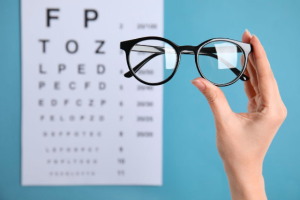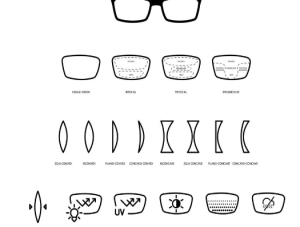Do you find yourself blinking repeatedly at your computer screen or struggling to read the fine print on a menu? If so, it might be time for prescription lenses.
But with so many options out there, how do you know which type is right for you?
Don’t worry – we’ve got you covered! In this ultimate guide to prescription lenses, we’ll explore the different types available, their benefits and drawbacks, and what kind of cost you can expect.
Say goodbye to blurry vision and hello to crystal-clear sight with our expert tips and advice!
What are Prescription Lenses?
Prescription lenses are sunglasses that have been specifically designed to correct your vision. These lenses are typically made from polarized material to reduce glare and protect your eyes from harmful UV rays. Prescription sunglasses can be either single-vision or multifocal, depending on your needs.
There are many different types of prescription lenses, each with its unique benefits and costs. The most common type of prescription lens is the single-vision lens, which is used to correct nearsightedness, farsightedness, or astigmatism.
These lenses are made from a single piece of glass or plastic and have uniform power throughout the lens.
Multifocal lenses are another type of prescription lens that can correct both nearsightedness and farsightedness.
These lenses have two or more areas of different power within the same lens, allowing you to see clearly at both near and far distances.
Multifocal lenses can be either progressive or bifocal.
Progressive multifocal lenses provide a gradual transition between the different powers, while bifocal lenses have a visible line separating the two powers.
Contact lenses are another option for correcting your vision. These thin discs of plastic are placed directly on the surface of your eye and can be worn for up to 30 days before they need to be replaced.
Contact lenses come in both soft and gas-permeable varieties, and can be used to correct nearsightedness, farsightedness, astigmatism, and presbyopia.
Check out our brands on Instagram. We do these brands: Esilor Lenses and Kodak Lenses
Types of Prescription Lenses
There are three main types of prescription lenses: single-vision, bifocal, and progressive.
Single-vision lenses are the most common type of prescription lens. They correct for either nearsightedness or farsightedness, but not both.
Bifocal lenses have two different prescriptions in one lens, one for distance and one for close-up. This type of lens is helpful for people who need help with both near and far vision.
Progressive lenses are like bifocals, but the transition between the two prescriptions is gradual instead of abrupt. This makes them a good choice for people who need help with both near and far vision but don’t want the line that is visible in bifocals
Benefits of Prescription Lenses
Prescription lenses have many benefits, including improved vision, reduced eye strain, and the prevention of further vision problems.
Prescription lenses can also help you see better in low-light conditions and make it easier to read small print.
If you wear contact lenses, prescription lenses can help keep your eyes healthy by preventing dryness and irritation.
Costs of Prescription Lenses
There are a few things to consider when budgeting for prescription lenses. The type of lens, the materials used, and the brand all play a role in the overall cost.
Glass lenses are the most affordable option, but they’re also the heaviest and most fragile. They’re not ideal for people with active lifestyles or for those who wear glasses for long periods.
Plastic lenses are a step up in terms of price, but they’re lighter and more durable than glass.
They’re a good choice for people who are active or who need to wear their glasses for extended periods.
Polycarbonate lenses are the most expensive option, but they offer the best protection from impact and UV rays.
They’re ideal for people who are very active or who spend a lot of time outdoors
Conclusion
Prescription lenses are a great way to improve your vision and make sure that you’re always seeing clearly.
With so many options out there, it can be difficult to decide which type of lens is best for you.
In this article, we have outlined the different types of prescription lenses available, their benefits, and what you can expect in terms of cost.
We hope that this information will help you find a pair of lenses that meets your needs while still falling within your budget.




